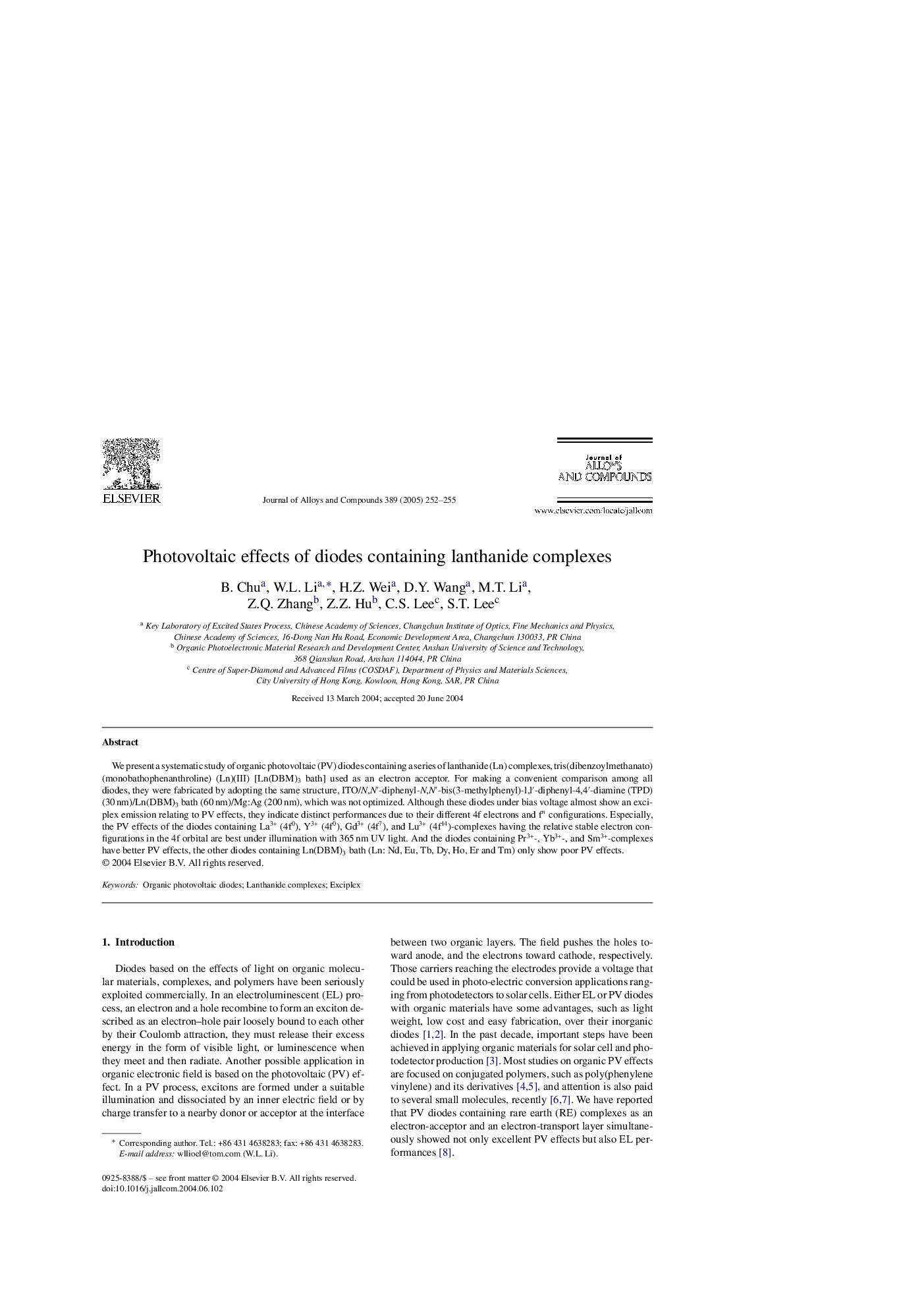| Article ID | Journal | Published Year | Pages | File Type |
|---|---|---|---|---|
| 9804111 | Journal of Alloys and Compounds | 2005 | 4 Pages |
Abstract
We present a systematic study of organic photovoltaic (PV) diodes containing a series of lanthanide (Ln) complexes, tris(dibenzoylmethanato) (monobathophenanthroline) (Ln)(III) [Ln(DBM)3 bath] used as an electron acceptor. For making a convenient comparison among all diodes, they were fabricated by adopting the same structure, ITO/N,Nâ²-diphenyl-N,Nâ²-bis(3-methylphenyl)-l,lâ²-diphenyl-4,4â²-diamine (TPD) (30Â nm)/Ln(DBM)3 bath (60Â nm)/Mg:Ag (200Â nm), which was not optimized. Although these diodes under bias voltage almost show an exciplex emission relating to PV effects, they indicate distinct performances due to their different 4f electrons and fn configurations. Especially, the PV effects of the diodes containing La3+ (4f0), Y3+ (4f0), Gd3+ (4f7), and Lu3+ (4f14)-complexes having the relative stable electron configurations in the 4f orbital are best under illumination with 365Â nm UV light. And the diodes containing Pr3+-, Yb3+-, and Sm3+-complexes have better PV effects, the other diodes containing Ln(DBM)3 bath (Ln: Nd, Eu, Tb, Dy, Ho, Er and Tm) only show poor PV effects.
Keywords
Related Topics
Physical Sciences and Engineering
Materials Science
Metals and Alloys
Authors
B. Chu, W.L. Li, H.Z. Wei, D.Y. Wang, M.T. Li, Z.Q. Zhang, Z.Z. Hu, C.S. Lee, S.T. Lee,
